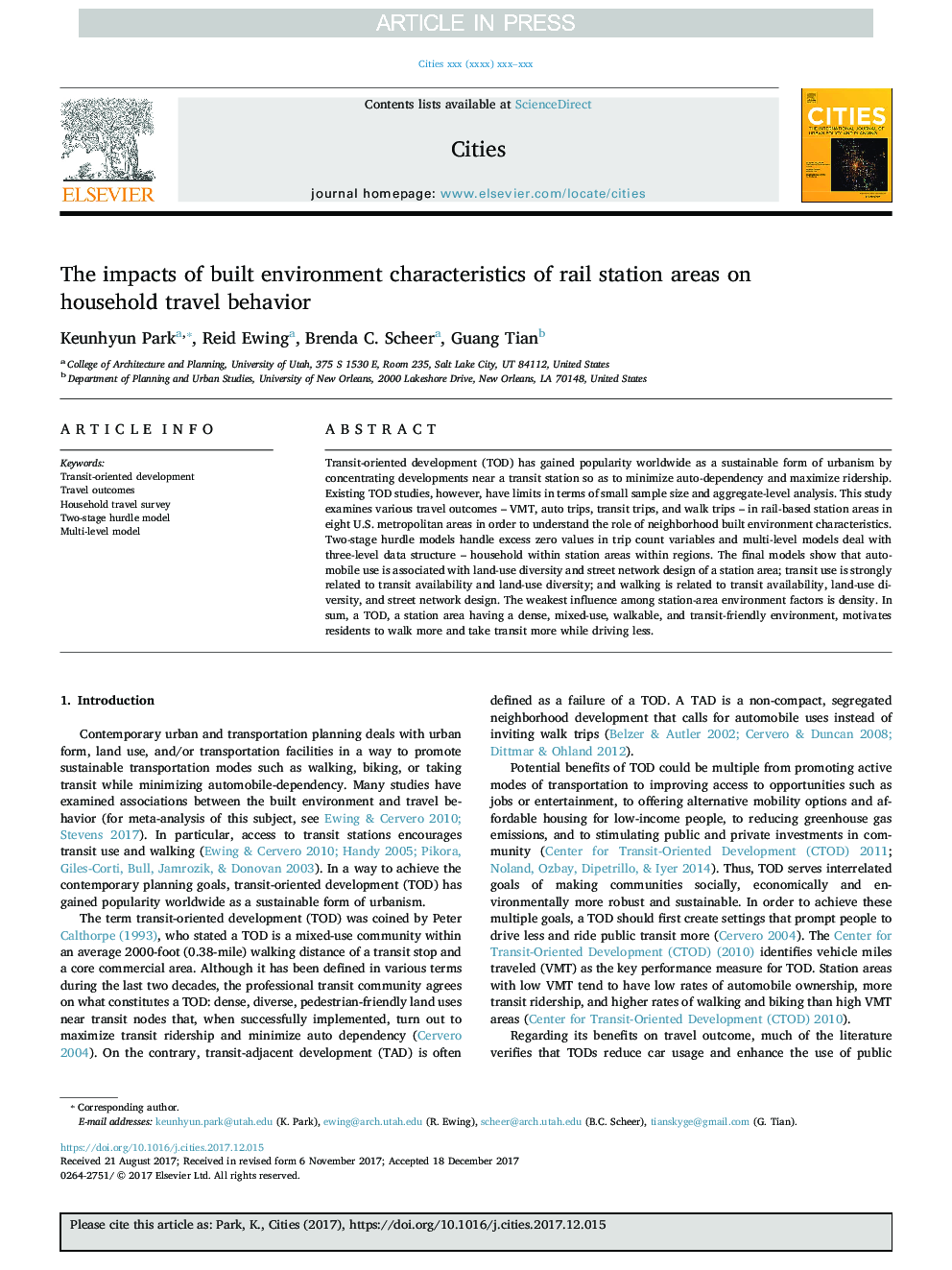| Article ID | Journal | Published Year | Pages | File Type |
|---|---|---|---|---|
| 7417594 | Cities | 2018 | 7 Pages |
Abstract
Transit-oriented development (TOD) has gained popularity worldwide as a sustainable form of urbanism by concentrating developments near a transit station so as to minimize auto-dependency and maximize ridership. Existing TOD studies, however, have limits in terms of small sample size and aggregate-level analysis. This study examines various travel outcomes - VMT, auto trips, transit trips, and walk trips - in rail-based station areas in eight U.S. metropolitan areas in order to understand the role of neighborhood built environment characteristics. Two-stage hurdle models handle excess zero values in trip count variables and multi-level models deal with three-level data structure - household within station areas within regions. The final models show that automobile use is associated with land-use diversity and street network design of a station area; transit use is strongly related to transit availability and land-use diversity; and walking is related to transit availability, land-use diversity, and street network design. The weakest influence among station-area environment factors is density. In sum, a TOD, a station area having a dense, mixed-use, walkable, and transit-friendly environment, motivates residents to walk more and take transit more while driving less.
Related Topics
Social Sciences and Humanities
Business, Management and Accounting
Tourism, Leisure and Hospitality Management
Authors
Keunhyun Park, Reid Ewing, Brenda C. Scheer, Guang Tian,
